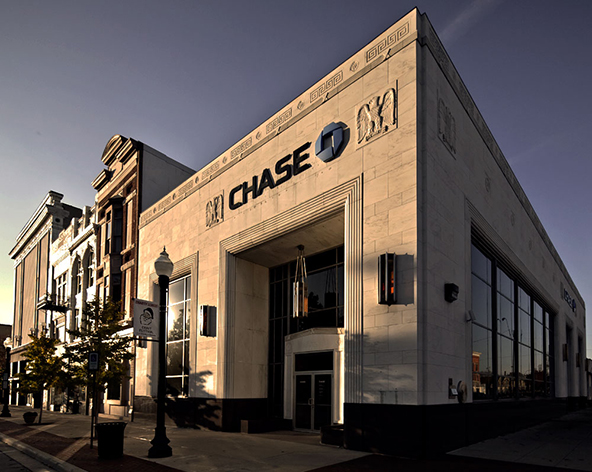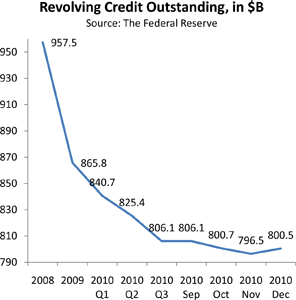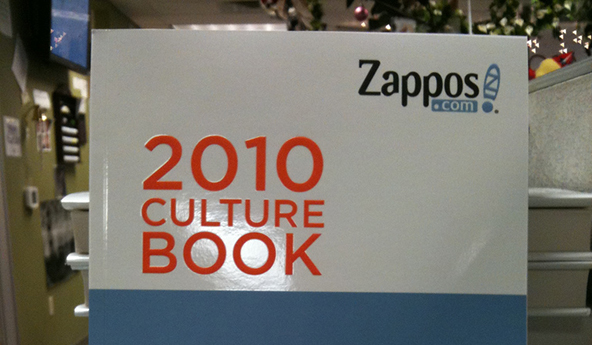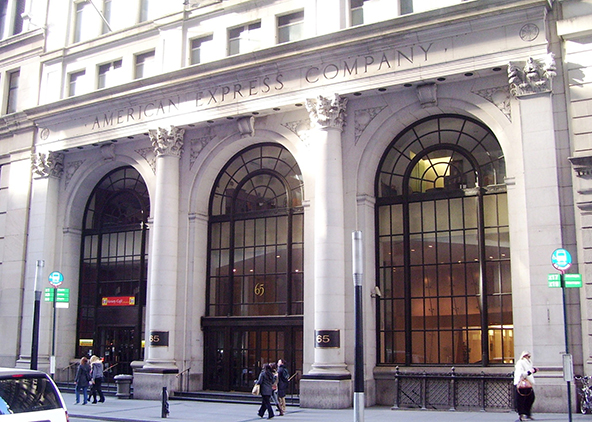U.S. Credit Card Defaults Lowest in 23 Months

Even though Americans spent more on their credit cards this past holiday season than they had in a long time, lifting the overall level of outstanding credit card balances in the U.S. for the first time since the financial meltdown began in the wake of Lehman Brothers’ collapse, they stuck to another two-and-a-half-year old trend and continued paying their credit card bills on time in January.
All of the six biggest U.S. credit card issuers reported lower rates of credit card defaults and delinquencies in their regulatory filings for January, setting new records in both categories in the process.
Credit Card Defaults at Lowest Level in 23 Months
Fitch’s Prime Credit Card Chargeoff Index fell 0.62 percent in January on a month-to-month basis, to 8.37 percent. Prior to December, the index had stayed above 9 percent for 20 consecutive months. Charge-offs are delinquent credit card balances lenders no longer believe will be repaid and write off their books as losses, typically 180 days after the last payment on the account.
After the latest drop, Fitch’s charge-off index is now 3.00 percent lower than its all time high of 11.37 percent set in February 2010 and is down 18 percent on a year-to-year basis, a two-year low.
Credit Card Delinquencies Fall to a 27-Month Low
Late-stage credit card delinquencies — payments late by 60 days or more — fell by 0.14 percent in January, to 3.23 percent, the 12th consecutive monthly decline and the lowest level in 27 months, according to Fitch.
Early-stage delinquencies — payments late by 30 – 59 days — also dropped, after a modest rise in December. This rate fell by 0.36 percent to 4.18 percent.
Credit Card Companies Benefit
Here is what the top six U.S. card issuers reported for January:
- JPMorgan Chase’s early-stage delinquency rate — payments late by 30 days or more — fell to 3.39 percent in January from 3.47 percent in December, the lowest level since September 2008. The bank’s charge-off rate dropped 1.02 percent to 5.97 percent, the first time the rate fell below 6 percent since January 2009. Chase’s charge-offs peaked at 10.91 percent in January of last year.
- Bank of America reported a 30-day delinquency rate of 5.17 percent in January, down from 5.24 percent in December. The Charlotte, N.C.-based bank’s charge-off rate dropped to 9.20 percent from 9.31 percent for the period. BofA’s charge-off rate reached its highest level — 14.53 percent — in August 2009.
- Citibank said its 30-day delinquency rate in January was 4.35 percent, down from 4.44 percent in the previous month. The New York-based bank charged off 7.49 percent of its balances, down 0.85 percent from 8.34 percent in December. Citi’s charge-off rate reached its peak in September 2009 at 12.14 percent.
- Capital One’s 30-day delinquency rate dropped to 4.00 percent in January from 4.09 percent in December. The bank’s annualized charge-off rate was down to 6.79 percent from 7.01 percent for the period. Capital One’s charge-off rate peaked at 10.87 percent in April of 2010.
- Discover reported a 30-day delinquency rate of 3.84 percent in January, down from 3.91 percent in the previous month. Its charge-off rate was reported at 5.75 percent, at an annualized rate, down from 5.94 percent in December. Discover’s charge-offs reached their highest level of 9.11 percent in February of last year.
- American Express continued to lead its peers in both the charge-off and delinquency categories. The New York-based company reported a 30-day delinquency rate of 2.10 percent in January, unchanged from December. American Express’s charge-off rate fell to 3.80 percent from 4.10 percent in December. AmEx’s highest charge-off level — 10.2 percent — was reported in April 2009.
Credit Card Takeaway
 The rate at which U.S. consumers are repaying their credit card debt — the monthly payment rate (MPR) — spiked by 1.75 percent in January after falling slightly in December. The current level of repayment – 20.81 – percent is the highest in 40 months, according to Fitch.
The rate at which U.S. consumers are repaying their credit card debt — the monthly payment rate (MPR) — spiked by 1.75 percent in January after falling slightly in December. The current level of repayment – 20.81 – percent is the highest in 40 months, according to Fitch.
So we’ve had good news all around on the credit card front in January. The unemployment picture also improved, although at 9 percent the unemployment rate is still way above its level prior to the collapse of Lehman Brothers. Yet, consumer confidence is clearly on the rise, so we should expect credit card balances to keep expanding in the coming months. Whether Americans will continue paying off their balances on time, however, is much harder to predict.
Image credit: Wikimedia Commons.



You are so aseowme for helping me solve this mystery.
Thanks, I’m glad you found the article helpful.